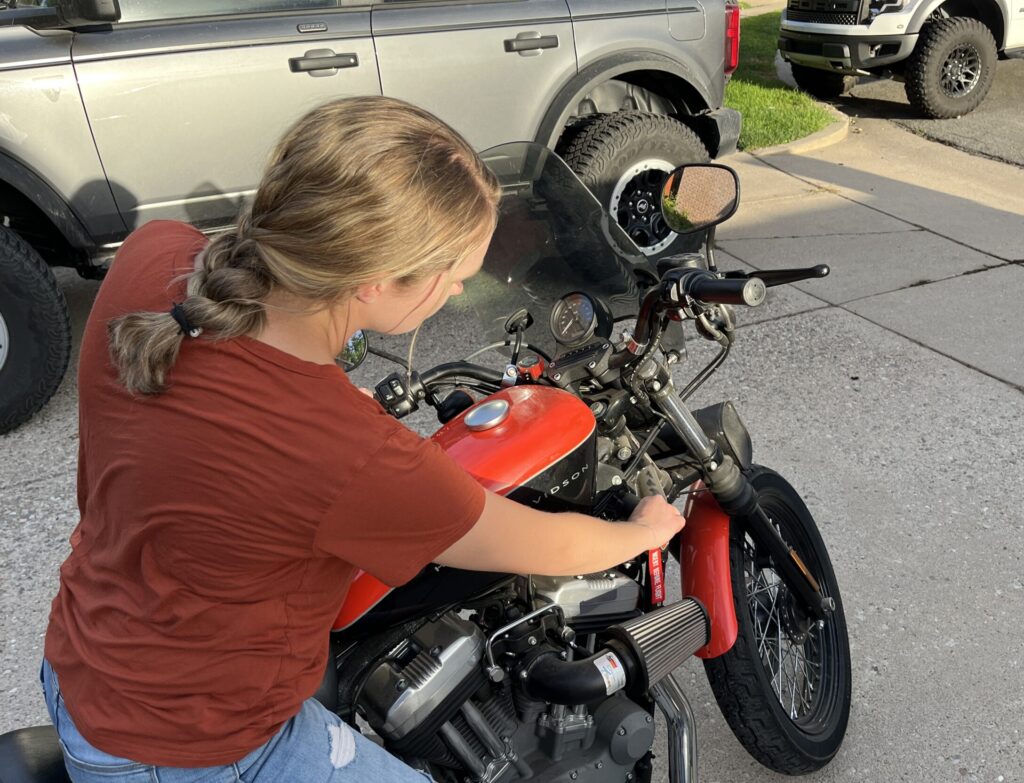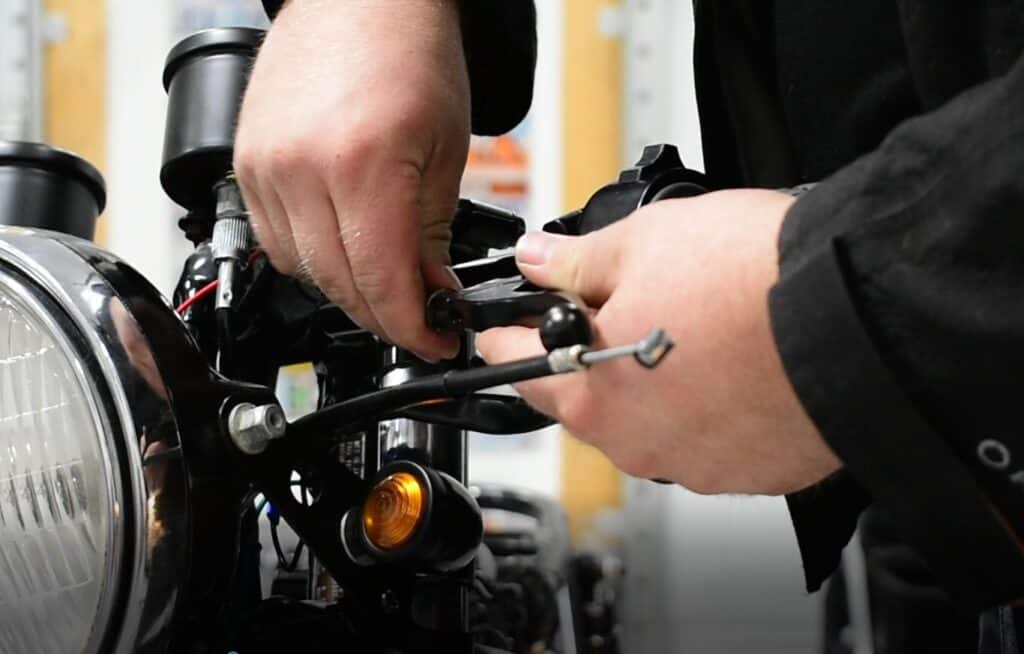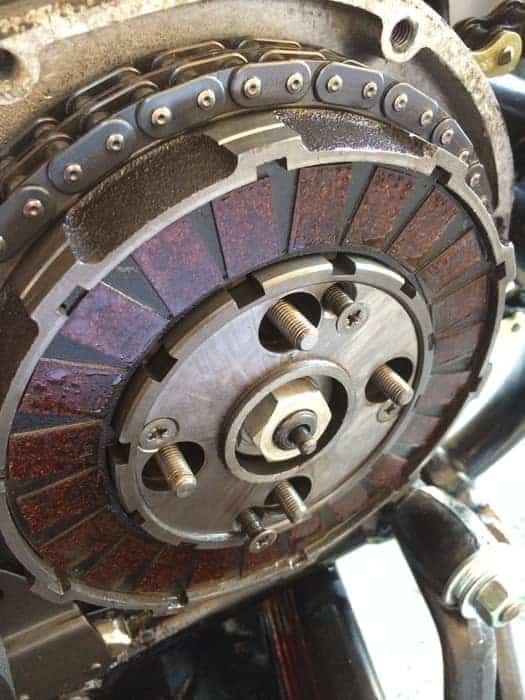
Every new motorcycle rider has to deal with the growing pains of learning how to use the clutch and stalling the motorcycle over and over again until you finally get the hang of it. That’s a normal part of the process, so if you’re struggling with that right now, you’re not alone. You may be wondering, however, why stalling is even an occurrence in the first place.
Why do motorcycles stall? Motorcycle engines stall because the frictional load of the stationary back tire overcomes the output force of the engine which makes the engine stop. In other words, the engine isn’t getting enough gas to push the motorcycle forward. This can be prevented by pulling the clutch handle, allowing the engine to spin independent of the rear wheel.
If you are sure that you’re doing everything correctly and your motorcycle is still stalling, then keep reading below. We have some troubleshooting tips that can help you find your problem.
Why A Motorcycle Stalls
The crankshaft inside your engine is spinning between 750-1500 times per minute while your motorcycle is idling in neutral. When you pull the clutch handle and drop the motorcycle into first gear, the engine is still spinning independently of the transmission because the clutch has disengaged the two.
As soon as you start to let go of the clutch handle, the transmission and the engine start engaging and they want to spin together. So if you don’t give the motorcycle some gas by twisting the throttle then the motorcycle will stall. If you do give it some gas then the motorcycle should slowly start to roll forward and you can continue to let off the clutch completely.
If your motorcycle has a tachometer then it’s easy to tell when your motorcycle is about to stall. And for those who have been riding motorcycles for a long time, you don’t really need the tachometer all that much because you can tell if you’re about to stall just by the sound.
Once your rpm’s drop below 750, your engine will start to sputter; this is because your crankshaft is spinning, trying to push the pistons up and down but there is too much friction. Watch your tachometer and try to keep the engine revved above 750 rpm’s.
Can Your Motorcycle Stall Even With The Clutch Handle Pulled In?
Let’s look at some troubleshooting reasons why your motorcycle might be stalling even when you have the clutch handle pulled in. These problems can range from very simple fixes to highly technical fixes.
The most common reason why your motorcycle is stalling even with the clutch handle pulled in is because your clutch cable stretches over time and becomes loose. Every time you pull the clutch handle you’re stretching that thin cable. Tightening the clutch handle nut can take up some of that slack and make your clutch function properly again.

If your clutch handle nut has been tightened all the way and it’s still not pulling the clutch in then it’s time for a new clutch cable. They cost between $30-$50 USD.
If your clutch handle pulls in way too easily and it feels like there’s no spring force pulling it back then you probably have a snapped cable. Sometimes the cables rust inside the sheath and break in half. Just replace the cable.
If your clutch handle will not pull in at all and it’s completely stuck in place, then try to loosen the clutch handle nut. If that doesn’t help then there could be three explanations.
- The easier possibility is that your cable has rusted inside and can no longer slide in and out of the sheath.
- The second explanation is that your clutch plates have rusted together. This is common if you didn’t have enough oil in the clutch or if the motorcycle has been sitting for a very long time.
- The third explanation is that your clutch springs have either rusted or have sprung out of their hole. This happened on my 1969 Triumph and I had to take off the left side engine cover to rebuild the clutch.
If your clutch handle pulls correctly but the transmission is starting to shift really hard then it may be time for new clutch plates. If they haven’t been changed in about 5 years or 15,000 miles then they should probably be changed if the motorcycle shifts hard. You can read our other article here to learn about symptoms of a bad motorcycle clutch.
If the clutch is working properly, the transmission shifts into gears smoothly, but the engine cuts out every time you try to start moving forward in first gear then your carburetor needs a good cleaning. On most carburetors, when the motorcycle starts to rev higher, a second set of jets will start adding fuel. If your jets are clogged then your engine will lose power at the same time that you’re letting go of the clutch. This will cause engine stall.
Why The Clutch Matters When It Comes To Stalling

A clutch is an extremely important part of a motorcycle. Without it, it would be almost impossible to go from neutral to 1st gear. It’s possible, but it’s not good on your transmission so I don’t recommend trying it.
A clutch acts as a marriage counselor between the engine and the transmission. When you’re in neutral, the engine is spinning a thousand times per minute and the transmission is stationary, no spinning gears are engaged.
As soon as you pull in the clutch handle and drop it into 1st gear, you are squeezing the small clutch discs together and they are now the only thing separating your engine from your transmission gear. As you slowly let go of the clutch handle, those gears are able to spin together.
The clutch plates are lined with friction pads, so when you pull the clutch handle they stick together, allowing you to change to whatever gear you want.
Does Stalling A Motorcycle Hurt The Engine?
Stalling a motorcycle a handful of times is not going to cause damage to your motorcycle. It’s not ideal to stall a motorcycle but it’s not going to affect anything. If you stall a motorcycle hundreds of times then that can start to have adverse effects on the engine.
Stalling is more harmful to your starter and battery than it is on your engine and transmission. Those components are designed to take that load over and over again without failing. But parts like the starter and battery have a much shorter life than an engine. So every time you have to crank the motorcycle back on again, that’s one crank sooner that your starter is going to fail.
I have taught several friends and family members how to ride motorcycles and drive manual transmission cars. All of those students stalled their vehicles many times. I’ve also repaired a fair share of engines on both manual cars and motorcycles and I’ve seen first-hand that there is no harm done stalling the engine.
Conclusion
Understanding why motorcycles stall is essential for riders to maintain control and confidence on the road. Stalling on a motorcycle can occur for various reasons, ranging from the engine not getting enough gas to push the motorcycle forward, to a poorly adjusted clutch cable.
Stalling isn’t necessarily harmful to the motorcycle engine, rather it creates wear on the battery and the starter since you’re constantly using those components to restart. Understanding how a motorcycle clutch works and why it stalls is a great way to become a better rider and implementing your knowledge when you need it!
